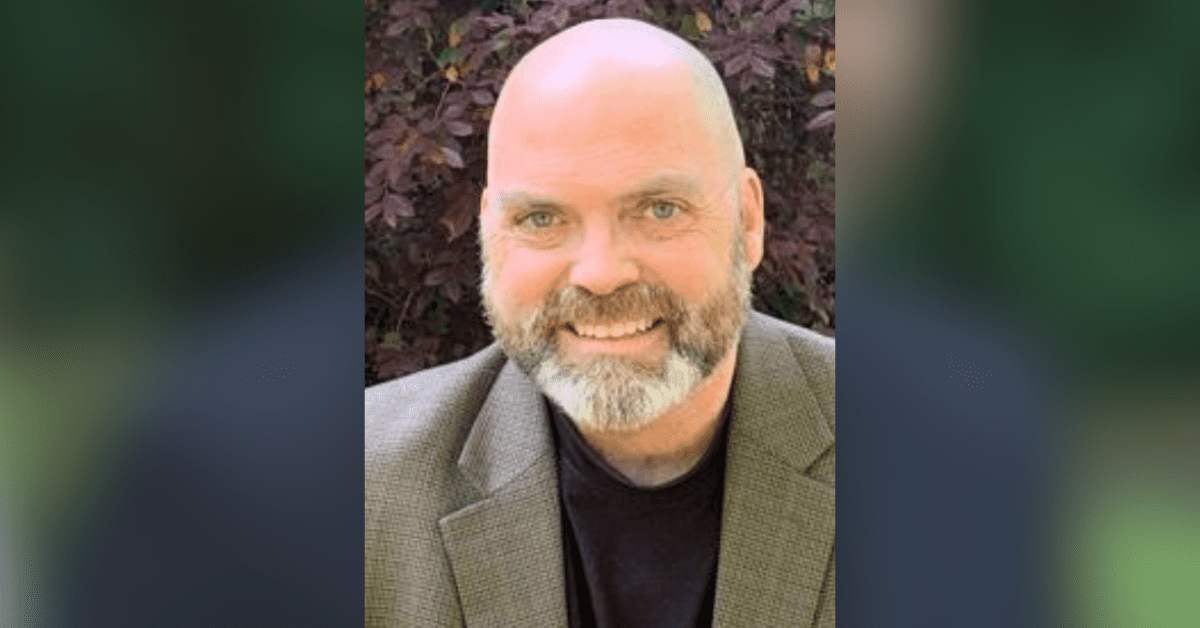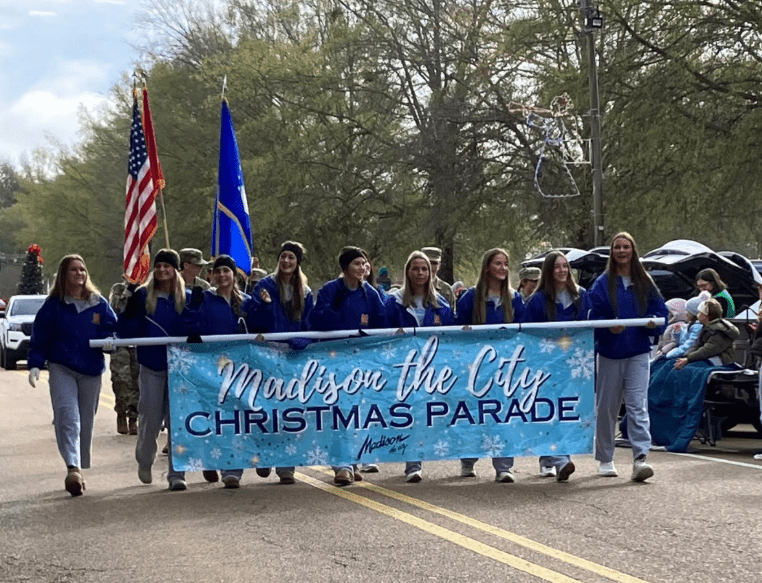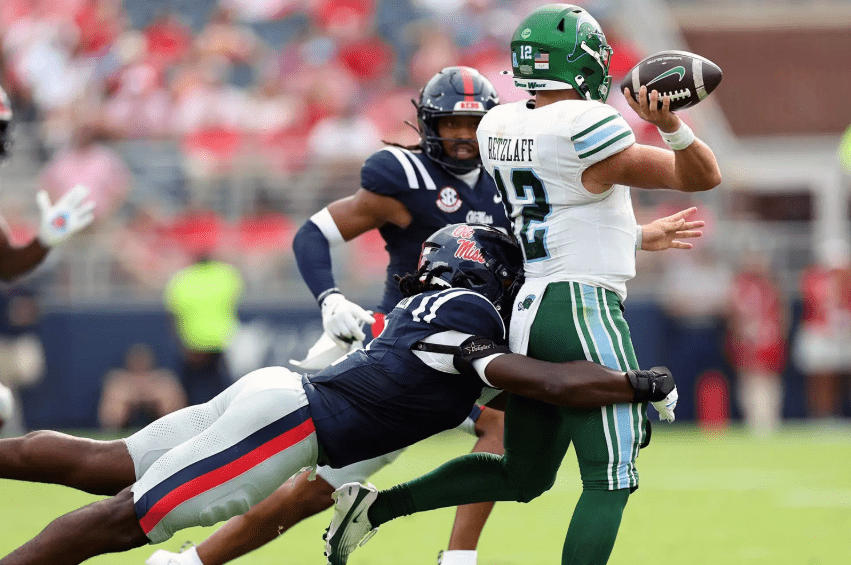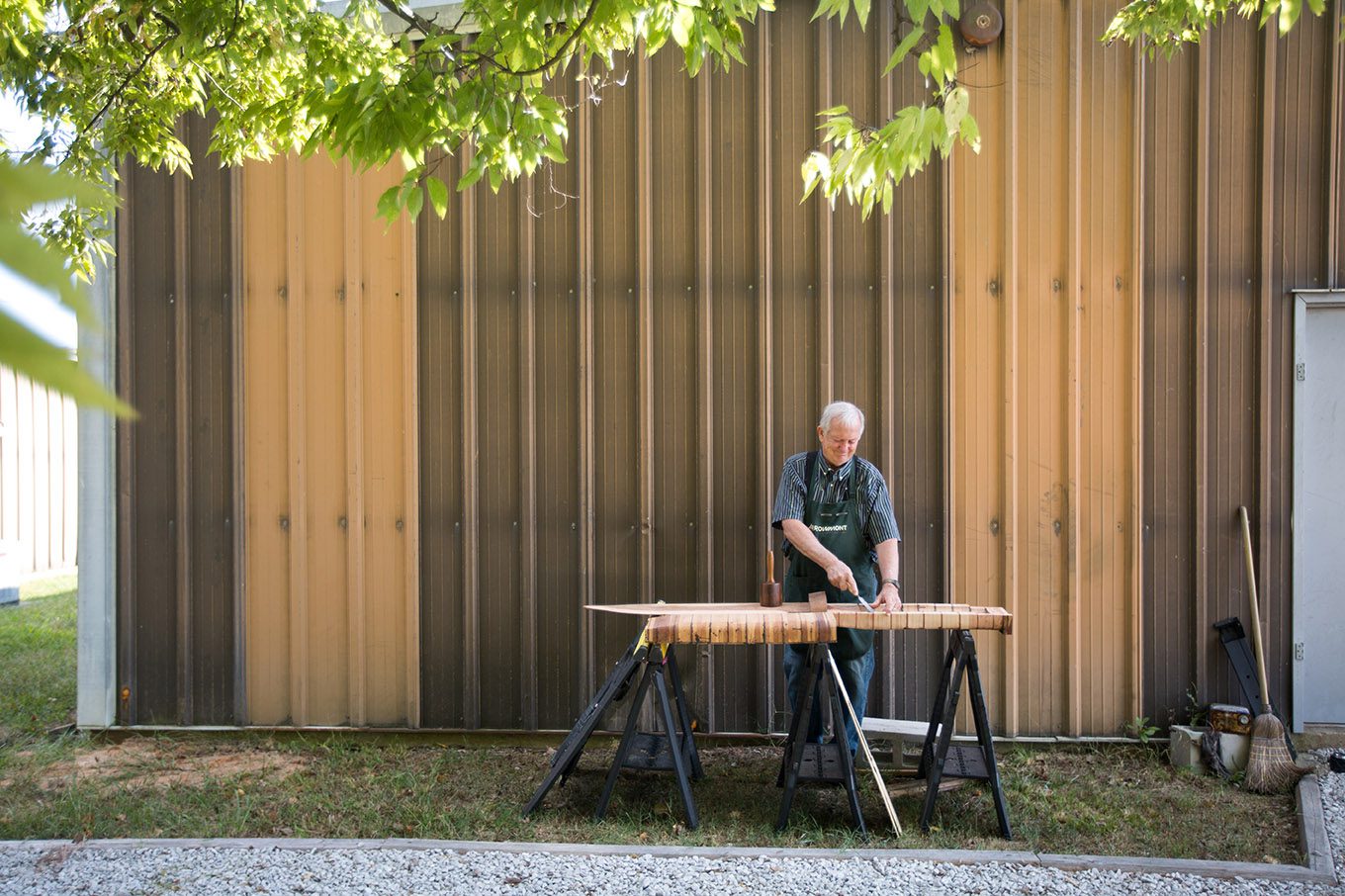
Ke Francis works on carving a large wooden knife for an upcoming show outside of his Tupelo studio.
- Located in Tupelo, Hoopsnake has plenty of room for the artists to work with its seven presses, which include four letterpresses, two etching presses and one bookbinding press.
Ke Francis had such a profound effect on his students at the University of Central Florida that a group of them followed him to Tupelo when he moved back home in 2014. These talented young “associate artists” create their own work alongside Francis at Hoopsnake Press, a large studio producing new art with old technology.
“About the same time I was retiring from the academic world in Florida and preparing to move back to our family home in Tupelo, they were graduating from college,” Francis said. “We had several long conversations about what’s next for them, and they suggested they follow me to Tupelo!”
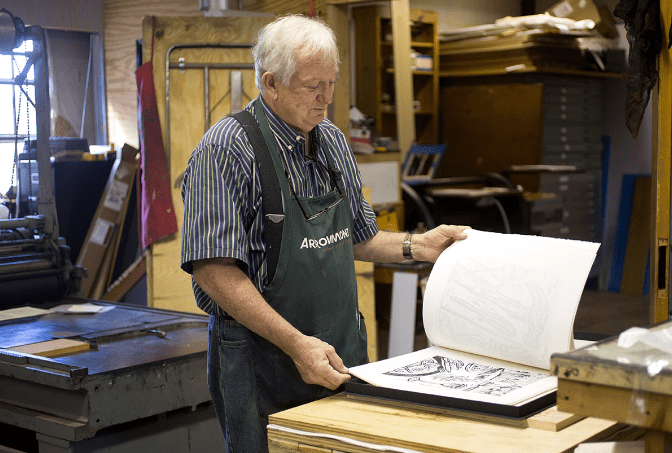
Hoopsnake has plenty of room for the artists to work with its seven presses, which include four letterpresses, two etching presses and one bookbinding press.
“While (the associate artists) were still in college, we had many discussions on what it means to be a working artist,” Francis said. “That first five years or so is tough to get established and to make a real living from art. They decided on their own they’d like to move to Tupelo to begin their careers and to continue learning from me. After all, I have over 50 years of experience.”
Born in Memphis, Francis moved with his parents to Tupelo when he was a baby. He grew up there, graduating from Tupelo High before studying at Mississippi State University, Memphis State University, the Memphis College of Art and, finally, the Cleveland Art Institute.
“I started out in engineering at Mississippi State, but quickly decided that was not for me,” he said.
It was art that got and kept Francis’ attention.
“As a child, I had an uncle who painted as a hobby,” he said. “He was a businessman, and he always encouraged me, supplying me with paints until he saw me copying Picasso. He came up during the Depression, and he thought I needed to do something more stable (as a career).”
After Francis graduated from the Cleveland Art Institute in 1967, the school offered him a teaching position.
“I taught for two years, then they offered me a tenured position, but I decided not to take it,” he said.
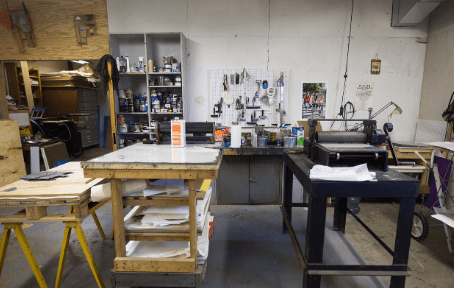
He had something else in mind. Francis had already started building the enterprise on his grandfather’s farm in Tupelo that would become Hoopsnake Press, which he founded in 1970. At first, it consisted only of a Charles Brand etching press and technical facilities that he used to print small-scale etchings and woodcuts.
For the next 26 years, he showed his art nationally and internationally, in galleries and museums. Over time, he broadened his craft to include the written word and expanded the operation at Hoopsnake to include typecasting equipment, large etching and relief printing presses and two letterpresses to handle the design, illustration and printing of books. Francis evolved into a narrative multimedia artist who creates limited editions of beautiful collector books that he writes and illustrates.
“What’s unusual about the books I make is that I do it all,” explained Francis. “I’m the writer, editor, publisher, artist, designer, printer and binder. It’s a different thing that I do. My paintings are narratives. There are characters who have interactions with the paintings. You can find the text in the work.”
In 1996, the press moved to the University of Central Florida (UCF) in Orlando, where it established a collaborative publishing venture with Flying Horse Press, the fine art press established by the university’s art department. Francis was the director of the press, which came to be known as Flying Horse Editions. When Francis decided to retire to Tupelo in 2014, he and his family decided to revamp his original studio in Tupelo and move the presses there.
While at UCF, Francis was a professor in the School of Visual Arts and Design, and he served as chair of the art department. When he announced his return to Tupelo, several students from his painting and printmaking class decided to move there with him after graduation.
“They came and helped me set up the studio,” Francis said. “They helped run plumbing, and I showed them how to plant a garden. That’s a new thing for them, as most of them grew up in large cities. They helped me out and, in return, they used my equipment when they were ready to print.”
Francis said everyone who moved to Tupelo was able to find places to live and part-time jobs, and they work on their art when they are able.
Francis is not only providing a place for his associates to work but also a chance to learn the business end of being an artist.
“I’m sharing with them how to do spreadsheets and project management, and they see how I get rejection letters just as they do — and I keep on moving forward,” he said. “I have a whole backlog of information on how to negotiate contracts, and I share that with them. They are also learning the importance of networking, and they see me preparing and giving lectures and demonstrations, and they’re learning how to do that.”
Jager Palad, whose work includes painting, etching and woodcuts, is one of Francis’ former students who spent time working along side Francis at Hoopsnake Press.
“Ke taught us the last couple of semesters we were at UCF. We got lucky. He took a liking to us,” he said. “We were making our own body of work, doing our assignments and more, and he took notice of that.”
The Baltimore native moved to Tupelo from Coral Springs, Florida. After spending a year in Tupelo, Palad said, “I love living here. I have gotten to know people in the community. We are working with Ke to build a program where people from all over the country will want to come and use the presses.”
After moving to Tupelo, Palad got involved with community art projects and showed his work at the Gumtree Museum of Art and in the Tupelo Arts Showcase at the Link Center. His work was also part of an show with other associates at Ittawamba Community College.
Francis said that this organic migration of artists parallels what happened in the 1950s at Black Mountain College in North Carolina.
“Several of the Bauhaus artists left Germany after the Nazi occupation and ended up at Black Mountain,” he said. “Many famous artists came out of that. At Black Mountain, the artists worked in the garden and helped cook meals.”
As they developed their craft at Hoopsnake, Francis’ group of young artists made a positive impact on their adopted state.
“The associates each contributed to Mississippi’s creative economy in a major way,” Francis said. “Many have settled in Tupelo, making it their home, paying rent, buying gas and groceries. They have participated in community arts projects in Tupelo, which add to the quality of life here and, gradually, they are expanding to other parts of the state to conduct lectures, demonstrations, workshops and exhibitions. Their presence here enriched so many lives.”
For information on Hoopsnake Press and upcoming shows, visit here.
